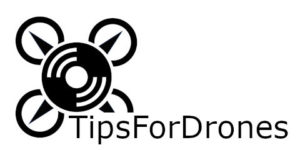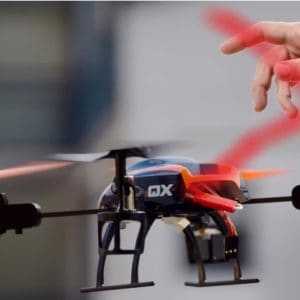My nephew has his birthday next month, and I am planning on buying him a drone. My wife asked me if they are dangerous, so I did some research, and here is a little summary.
Can a drone propeller hurt you? Yes! There are a lot of examples of drone propeller injuries. Small drones cannot cut your fingers, but if they crash into your face, they may cause injury to the eyes. Propellers of bigger drones can lead to deep cuts, sever body parts, and, worst case scenario, even kill you if they cut you in one of your main arteries in the neck or wrists.
Drones are not toys, and there are a lot of things to consider in order to use a drone safely. There are some interesting facts about drone injuries and the safe handling of drones.
Why can a drone hit you and what exactly can happen?
The drone market is exploding, and accidents are increasing. The legal provisions are becoming increasingly stringent. The reason for all of this is a lack of knowledge about the proper handling of drones. Most people do not adequately inform themselves about the use of drones and do not realize what can happen if something goes wrong.
What can go wrong during a flight? There are two main types of accidents, technical malfunction or human errors. In both cases, the drone can hit you.
Technical malfunction:
Most accidents related to technology have been caused by electric problems. The battery is empty or gets too cold. A short-circuit occurs due to influx of water, or the battery or one of the battery eliminator circuits (BECs) burns down. Furthermore, propellers can break, especially if they are older. However, the result is always the same: the drone just falls from the sky vertically.
That is the reason why you never should fly over people! Depending on how heavy the drone is and from what height it falls, a drone freefall can have serious consequences. In most cases case, the result is bruising or head injuries due to the impact of the fall.
Human errors:
However, the majority of falls are due to human errors. There are many different ways to crash a drone, and the stupidity of humans is infinite. Many accidents happen inadvertently. Pilots become distracted and lose sight of the drone. They panic, do not realize how the drone is aligned, and steer in the wrong direction. Should a person get in the way, the drone will hit them full throttle.
These accidents are different from technical infirmity accidents with a freefall. Mostly, the drones crash under full throttle and horizontally. Therefore, the resulting injuries are also different. Depending on where the drone hits a body, deep cuts are usually expected, along with bruises and fractures. Small drones are also dangerous if they crash into a victim’s face, and big drones can even kill you.
What should be considered when handling drones safely?
I didn´t find any good content on the internet about handling drones safely. So, here are 10 things that I think are important to consider when using drones.
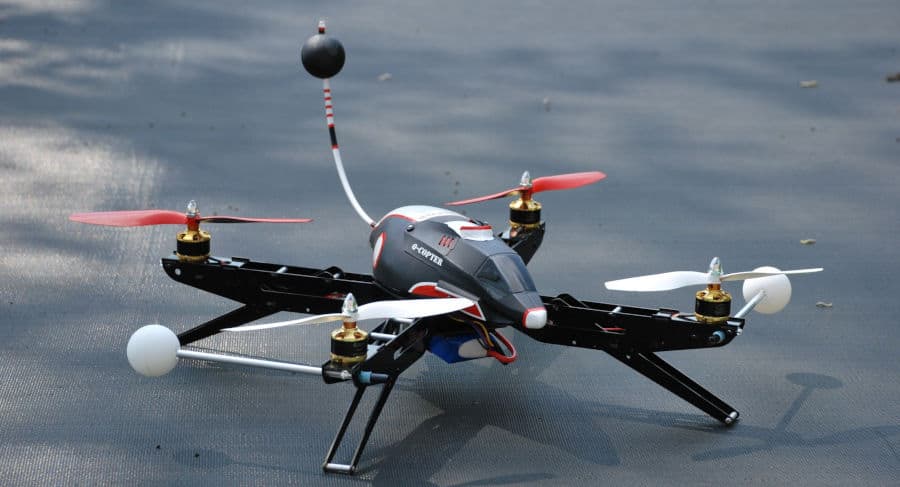
Step 1: Is the drone allowed to fly where I want to fly?
Look at the local laws about flying a drone. They are published on the internet sites of the government and aviation associations. You can find a list of some countries here. Generally, drones are not allowed to fly near airports or in cities.
Step 2: Is the weather good enough to fly?
The ideal weather conditions for the flight can be found in the description of your drone. The main parameters are wind and visibility. You have to be sure that you can see the drone throughout the whole flight.
Step 3: Is the drone ready to fly?
This process of preparation is done at home. Look at your drone to ensure that the propellers are not damaged and no parts are loose. Ensure that the battery and remote control are fully charged.
Step 4: How is the local wind?
When you’re at the launch site, look at the wind for a while. If it is consistently strong and always coming from the same direction, you can get ready to go. Place the drone with its nose against the wind and stand behind the drone, so that the wind is blowing in your face and you can feel any direction change.
Step 5: Is the starting area safe?
Before you connect the battery, check whether the propellers of the drone can move freely. Place all unnecessary items at a safe distance, power the drone, and turn it on.
Step 6: Conduct a final technical check.
Look at the propellers. Do they all spin in the right direction and with the same constant speed?
Step 7: Is the flying area free and safe?
Look around to make sure nobody has come in the meantime who could be in danger and check the sky to see if you can start.
Step 8: How does my drone react during the flight?
Never lose sight of the drone during the flight. Check to make sure the drone always follows your control signals. If the drone makes unwanted movements, it may be that the wind is too strong, and you should land. Never fly over people, and keep a safe distance from them. The same goes for houses and trees. A small gust of wind is enough to make your drone crash. Be sure that you always have the drone under control.
Step 9: Is my landing area safe?
Before you land, check the area around you again. If people or animals have come into the area during flight, you must wait until you have enough space to land.
Step 10: Turn off the drone and pack it up.
After landing, you should immediately turn off the drone and disconnect it from the battery.
Don´t be nervous before you fly. No master has fallen from the sky. I wish you all the best for your flights and many hours of fun and action.
Different types of drone propeller guards
A propeller guard for a drone is a component that protects the propeller itself or a user from reaching into the propeller. There are three types of propeller guards.
Lap Bar: This is a frame that looks like a segment of a circle. It is assembled between the propeller and the motor or sometimes under the motor on the frame of the drone. It provides a low level of protection for lateral impact. The propeller is free, and it has no function to prevent a user from reaching into the propeller.

Bounded Guard: This propeller guard looks like a ring around the propeller. Mostly, it is integrated directly into the drone frame. It offers protection against impacts from each side, but the vertical airstream is open, so you can reach into the propeller.
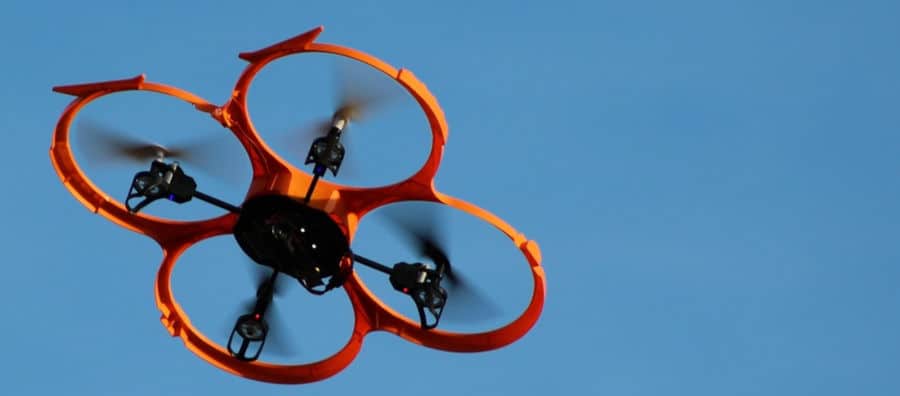
Propeller Cage: This is a kind of cage made of thin metal or plastic bars that surround the propeller. This is the best protection against every potential damage to the propeller and is safe during handling of the drone.
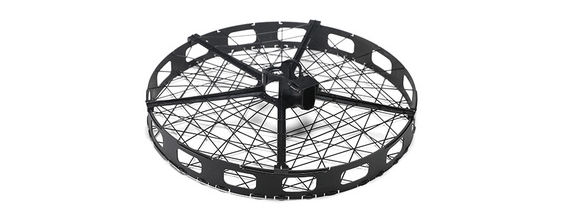
Can a drone kill you?
Yes! That is the absolute worst-case scenario, but drones can kill you. The MythBusters tested different drones and came to the conclusion that a drone definitely can kill somebody. They piloted drones into a mannequin with a neck full of blue blood to see what would happen.
Small drones like a Phantom Quad have blades that bend instead of cutting the skin of a person’s neck. Large customer drones with carbon-fiber propellers react differently. Instead of bending, the propellers cut a vein in the neck of the dummy, and blue blood spilled out.
What are drone propellers made of?
Generally, propellers are made from either plastic or glass or carbon fiber. This depends on the size of the drone (large drones—carbon fiber or glass fiber, small drones—plastic), the required stiffness, and the required lifespan.
How fast is a drone propeller?
Drone motors have a speed range of 10,000 – 40,000 rpm. The top speed of the propeller tip depends on the propeller diameter. For example, a Phantom propeller with a 9.4-in diameter and a motor with 25,000 rpm leads to a propeller tip speed of about 700 mph.
